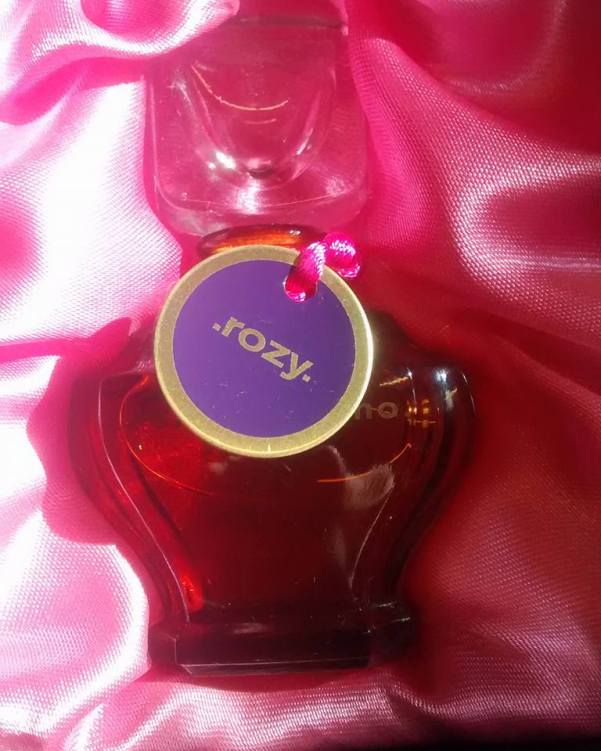
foto: Caro Fernandez
Las creaciones de Vero Profumo llevan a menudo el sello de los grandes clásicos sin que eso vaya en desmedro de su propia identidad. Rozy, que fue concebido como un homenaje a la fabulosa Anna Magnani, recuerda a un mismo tiempo obras tan disímiles como Guerlain Nahéma, Knize Ten y Dior Poison.
Cuando Rozy fue presentado, en 2014, las dos fórmulas que la nariz Vero Kern ofrecía no podían diferir más entre sí. El eau de parfum, una mélange coqueta de duraznos, rosas y lilas, resultaba quizás la fragancia menos polarizante de toda la línea. El voile d’extrait, en cambio, se mostraba más oscuro, taciturno, poco accesible: bourgeons de cassis, cuero y una tuberosa con matices de goma y miel que apenas atenuaba las cosas. Se sentía como una versión femenina (aunque no demasiado) de Knize Ten. Tiempo después, se lanzó el extrait. Rozy extrait parece más cercano al voile en composición, se siente más denso -al punto de la viscosidad- y ridículamente hedonista. El ritual casi íntimo de aplicar la fragancia concentrada sobre los puntos de pulso con su taponcito de vidrio, intensifica la experiencia.
Al abrir la botellita se recuerda de inmediato el extrait de Poison, una semejanza no aparente en las otras versiones de Rozy. Este extrait evoluciona sobre la piel mucho más rápidamente que el eau de parfum o el voile. La salida, incisiva, es efímera y menos alcanforada. En el corazón oscuro y texturado aparece una rosa damascena jugosa y de dulzor casi nectarino. El rol estelar, sin embargo, corresponde a una tuberosa gomosa, desprovista de toda faceta tropical o luminosa. Es en esta etapa que la profundidad y complejidad de Rozy se aprecian mejor. La base emerge sin hacerse esperar: cistus y sándalo irradian calidez, mientras que miel y almizcle logran un suave ronroneo animal. Encuentro el extrait menos tenaz que el voile d’extrait, pero su fluidez y redondez compensan ampliamente esta ligera desventaja.
Caro
Origen de la muestra: Botella comprada en Campomarzio 70, Roma.

foto: Caro Fernandez
Vero Profumo Rozy extrait – Deep purple
Vero Profumo creations often bear the mark of the great classics all the while retaining their own strong identity. Rozy, which was conceived as a tribute to the fabulous Anna Magnani, reminds at a time of such dissimile masterpieces as Guerlain Nahéma, Knize Ten and Dior Poison.
When Rozy was introduced, back in 2014, the two formulas nose Vero Kern offered couldn’t be more different from each other. The eau de parfum, a flirty mélange of peaches, roses and lilacs, became perhaps the least polarizing fragrance in her line. The voile d’extrait, in turn, appeared darker, moody, not too approachable: bourgeons de cassis, leather and a rubbery honeyed tuberose that mellowed things just a bit. It felt like a feminine (though not too much) version of Knize Ten. Some time later the extrait was launched. Rozy extrait seems close to the voile in composition, it feels denser -to the point of viscosity- and absurdly decadent. The almost intimate ritual of dabbing concentrated fragrance on pulse points with the stopper intensifies the experience.
Upon opening the tiny bottle one is reminded of Poison extrait, a similarity not apparent in Rozy‘s other versions. This extrait evolves on the wearer’s skin much faster than either the eau de parfum or voile. The pungent opening is short lived and less camphoraceous. In the dark textured heart, a juicy almost nectarous rose damascena appears. The starring role, though, still belongs to a rubbery tuberose, devoid of any luminous or tropical facets. It is at this stage where Rozy‘s depth and complexity are best appreciated. The base emerges soon: labdanum and sandalwood radiate warmth, while honey and musk make for a soft animalic purr. I find the extrait slightly less tenacious than the voile d’extrait, but its smoothness and roundness more than make up for this disadvantage.
Caro
Origin of sample: Bottle purchased at Campomarzio 70, Rome.










